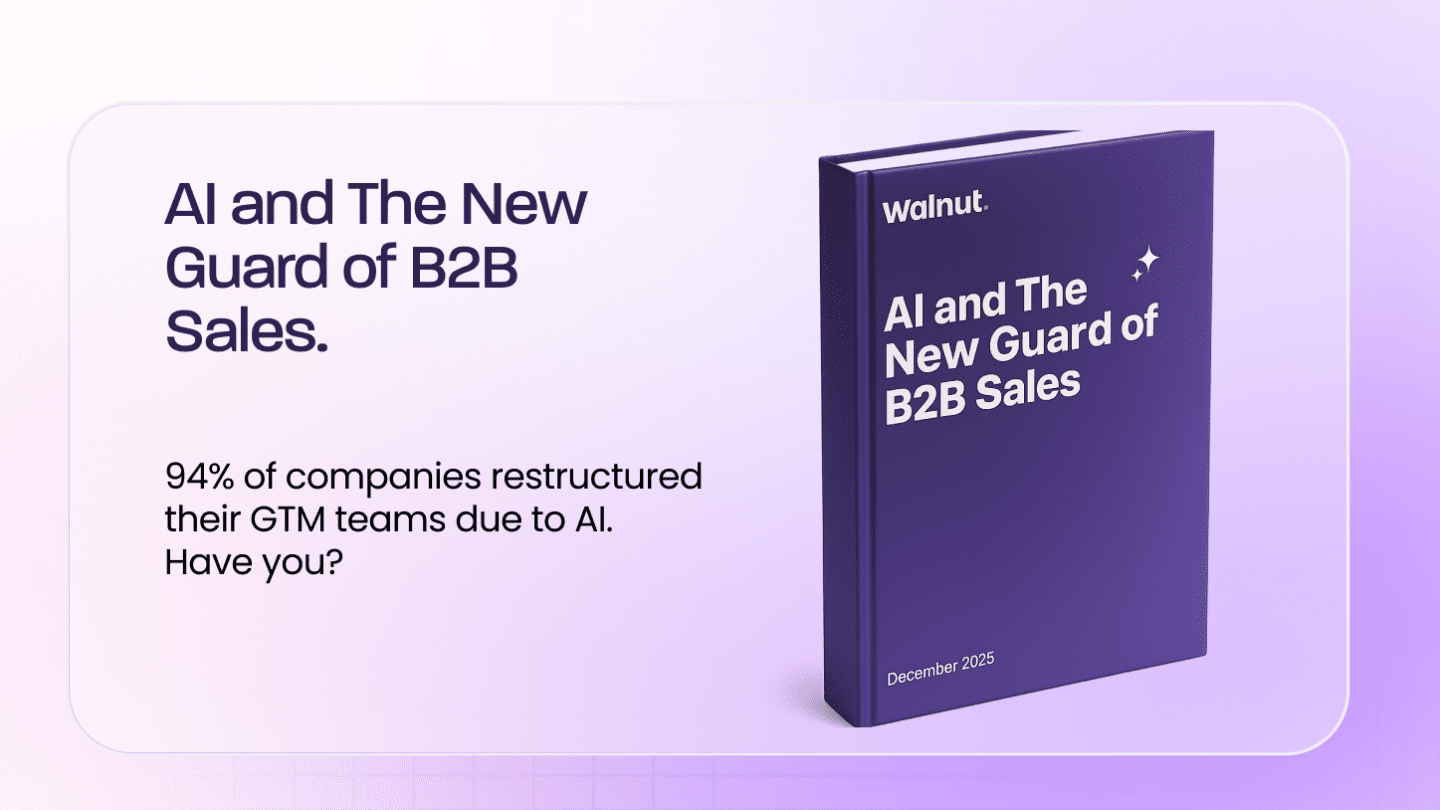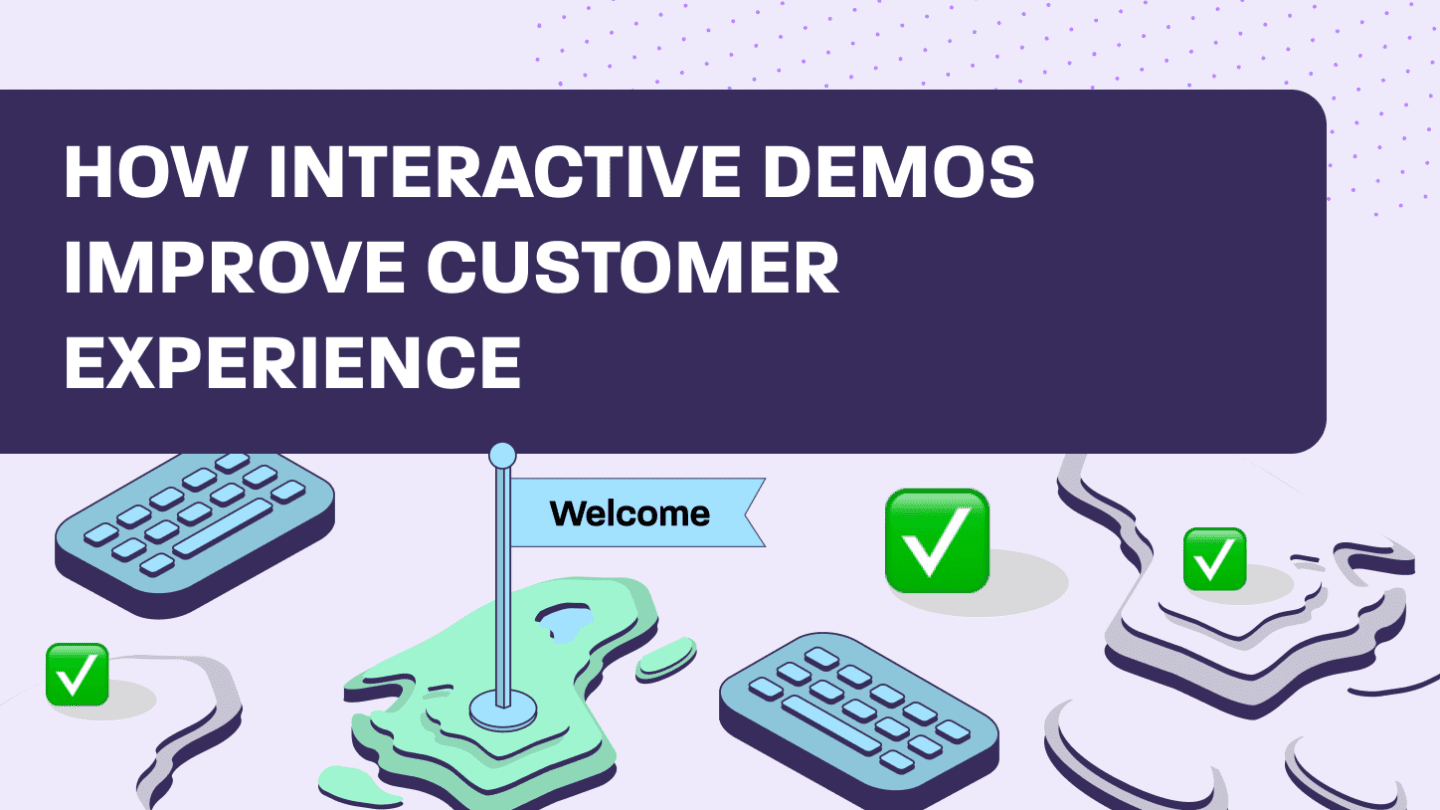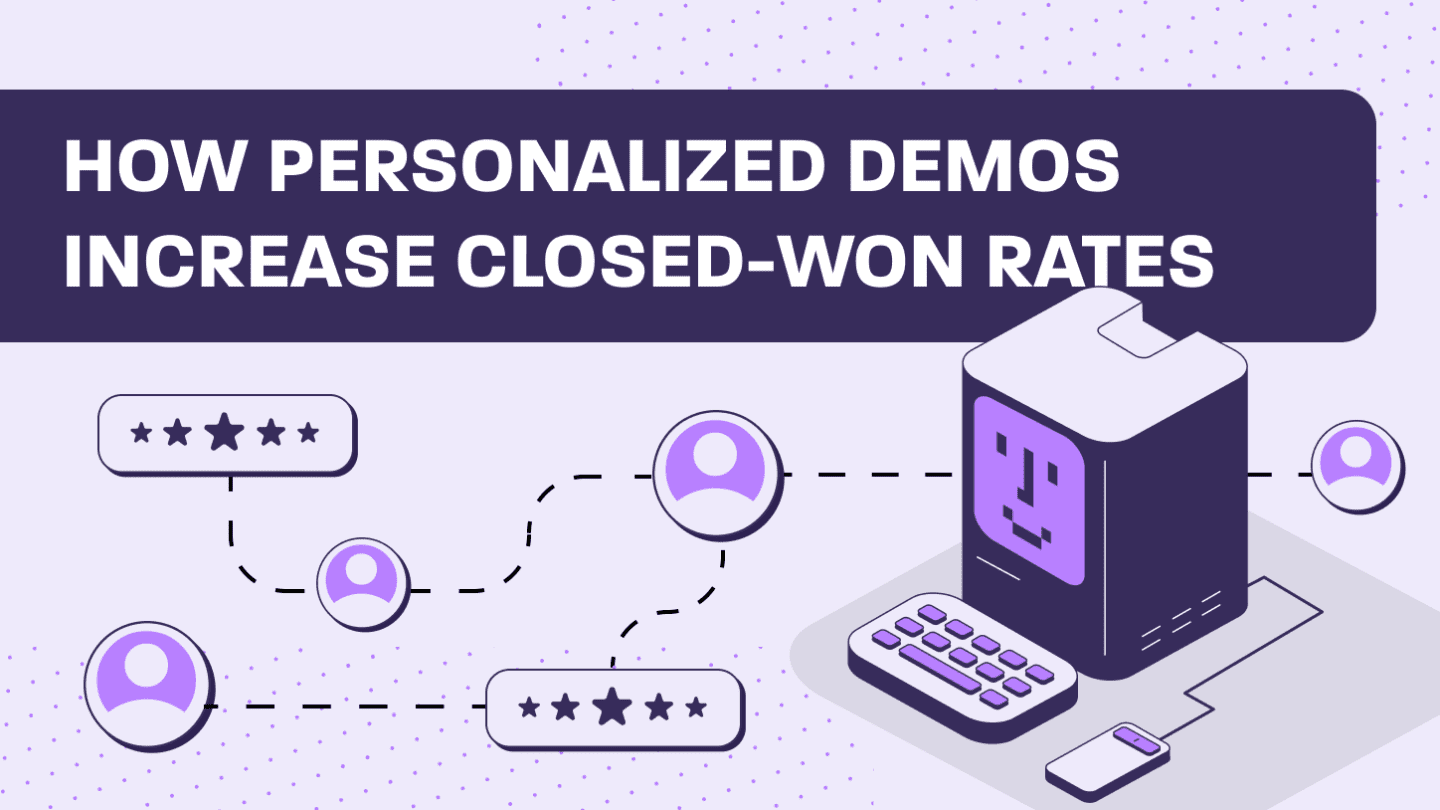Updated on December 2, 2024.
Happy customers, happy life.
(See? It even rhymes.)
Oh wait, I think we got our sayings mixed up…
Even if that’s not actually how the old saying goes, happy customers typically are loyal customers. And loyal customers can evolve into the biggest promoters or champions of your brand.
So, it’s pretty safe to say that customer satisfaction is essential when it comes to unlocking growth and boosting your return on investment (ROI). But how exactly can you quantify something as subjective as customer satisfaction?
Enter CSAT. We know that this sounds like a scary standardized test, but don’t panic! This sales term actually stands for customer satisfaction score and is a method for gauging overall customer satisfaction and customer delight.
In this article, we’ll break down everything you need to know about CSAT and how you can apply it to your current SaaS sales strategy.
What is a customer satisfaction score (CSAT)?
Before we jump right in, let’s make sure we’ve got the basics down pat.
CSAT is a SaaS metric that helps go-to-market (GTM) and customer success teams evaluate how satisfied their customers are with a product, service, or brand experience.
In short, the metric is a simple percentage that reflects your customers’ overall satisfaction. Anything above 50% shows a mostly positive response, while anything below 50% is mostly negative.
What are CSAT surveys?
That all makes sense, but these percentages don’t just appear out of thin air. Because that’d be freaky.
So, where does the customer satisfaction score come from?
CSAT surveys are the most common way to calculate customer satisfaction scores. In fact, you’ve probably taken a number of them whenever you’ve interacted with an online platform or SaaS.
These surveys are a super straightforward way to tell how happy your customers are because they involve asking a simple question: “How satisfied are you with your experience?”
Customers then give their answers by choosing their level of satisfaction from a Likert-type scale. You can use any scale you want for this; 1-3, 1-5, or even 1-10.
On top of this, CSAT surveys can have a single question or multiple. For example, you can ask customers to pinpoint their satisfaction with different factors in a single survey, including:
- Overall satisfaction
- Ease of use
- Professionalism
- Features
- Response times
You can also send a CSAT survey with an open-ended question to get more in-depth information.
Because these are quick surveys, you can send them at various points throughout the sales process to get a broader sense of how the customer feels. Not only is this a good way to spot any potential bottlenecks, but it can also help you improve the buying experience.
And this is just what we like to hear!
The main difference between customer delight and customer satisfaction
You may be thinking to yourself, “Gee Walnut, customer delight sounds a whole lot like customer satisfaction.”
To this, we would answer, “What an astute observation, blog reader! You’re right that they have some similarities, but there is a key difference.”
Customer satisfaction refers to when you meet buyers’ expectations. Meanwhile, customer delight is about going above and beyond what buyers expect to create a positive experience and reputation surrounding your brand.
While it’s critical to have satisfied customers, if your buyers are delighted, it increases the likelihood that they’ll become product and brand advocates.
This is because there are more solutions on the market than ever before. With this in mind, it’s simple for customers to switch to a competitor’s product because yours didn’t surpass their expectations.
Not to mention, customers can also easily share their experiences with your brand online, which means average or negative feedback can spread like wildfire.
All of this makes customer delight critical when it comes to customer retention and ultimately driving revenue growth.
How to achieve successful customer delight
Now that we have an understanding of what customer delight is, let’s go over everything you need to do to achieve customer delight:
1. Make it easy for buyers to get in touch with you
Don’t make it too complicated for buyers to get in touch with you.
Because there’s no bigger turn off than having to endlessly search for a company’s contact information or feeling like the company’s support team is trying to avoid you.
It’s not only essential for it to be easy to reach you, but there should be multiple ways to get in touch with your team. Customers should be able to easily find a phone number, email address, social media account, or chat.
2. Offer timely support to your buyers
Don’t waste any time when it comes to offering your customers support.
Part of successful customer delight is being available and responsive whenever your buyers reach out to you. When you respond to your customers ASAP, it conveys that they are your first priority.
3. Tailor the buying experience for every customer
On top of this, you want to make sure that the support you’re providing is tailored to your buyers’ needs.
And you can do this by sending your buyers personalized interactive tutorials.
But this doesn’t just mean adding the prospect’s name or their company’s logo to the tutorial. You’ll also want to focus the tutorial on the features that are specifically applicable to them and reinforce how the product will address their unique problems.
4. Use feedback from buyers to drive customer delight
Even if you have an amazing sales or support process in place, there’s always room for improvement.
And when trying to learn where you can improve when it comes to customer delight, who better to ask than your actual clients?
That’s why we recommend checking in with your customers for feedback, looking at reviews, or using surveys and CSAT scores to understand which parts of your product, process, or services need some work.
All of this will help you better understand if your customers are satisfied with your product and company.
5. Offer educational resources
To go above and beyond when it comes to customer expectations, you need to offer educational resources like tutorials, common FAQs, webinars, and knowledge base articles to help buyers better understand how to get the most out of your product and to troubleshoot.
To do this, you can send interactive product demos to get them interested in your product, enable your champion to sell your product internally, handle objections that came up during your call with them, and help them get onboarded or troubleshoot.
6. Remember your buyers are people too
One of the biggest mistakes you can make is treating your buyers like numbers instead of like people.
We know that at the end of the day, you have a quota to meet, but you need to make sure that you’re still putting buyers’ needs first.
Your interactions with buyers have to center around finding a solution that helps them solve their problems and meet their goals.
Because when you treat buyers like people, it makes them feel like you’re not just trying to get something out of them and that you have their best interests at heart.
Examples of customer delight
Here are a few examples of companies that have been able to nail it when it comes to customer delight.
1. HubSpot
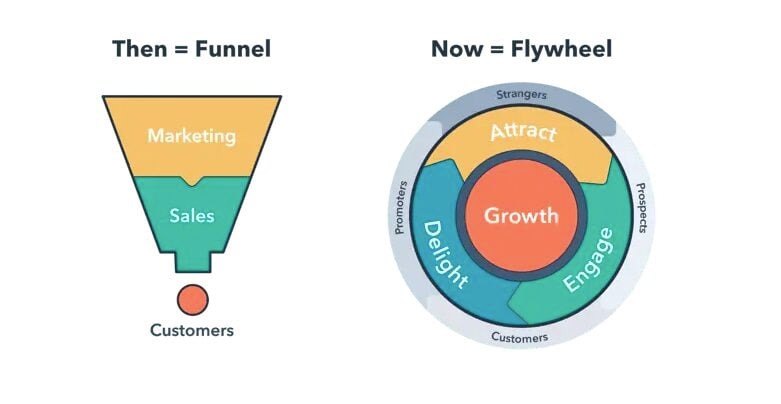
It’s not just HubSpot’s customer success team that works to exceed customer expectations. It’s the entire organization.
From marketing, growth specialists, sales, and other teams throughout the company, HubSpot works to offer its buyers a positive experience at every touchpoint throughout the buying journey.
2. Loom
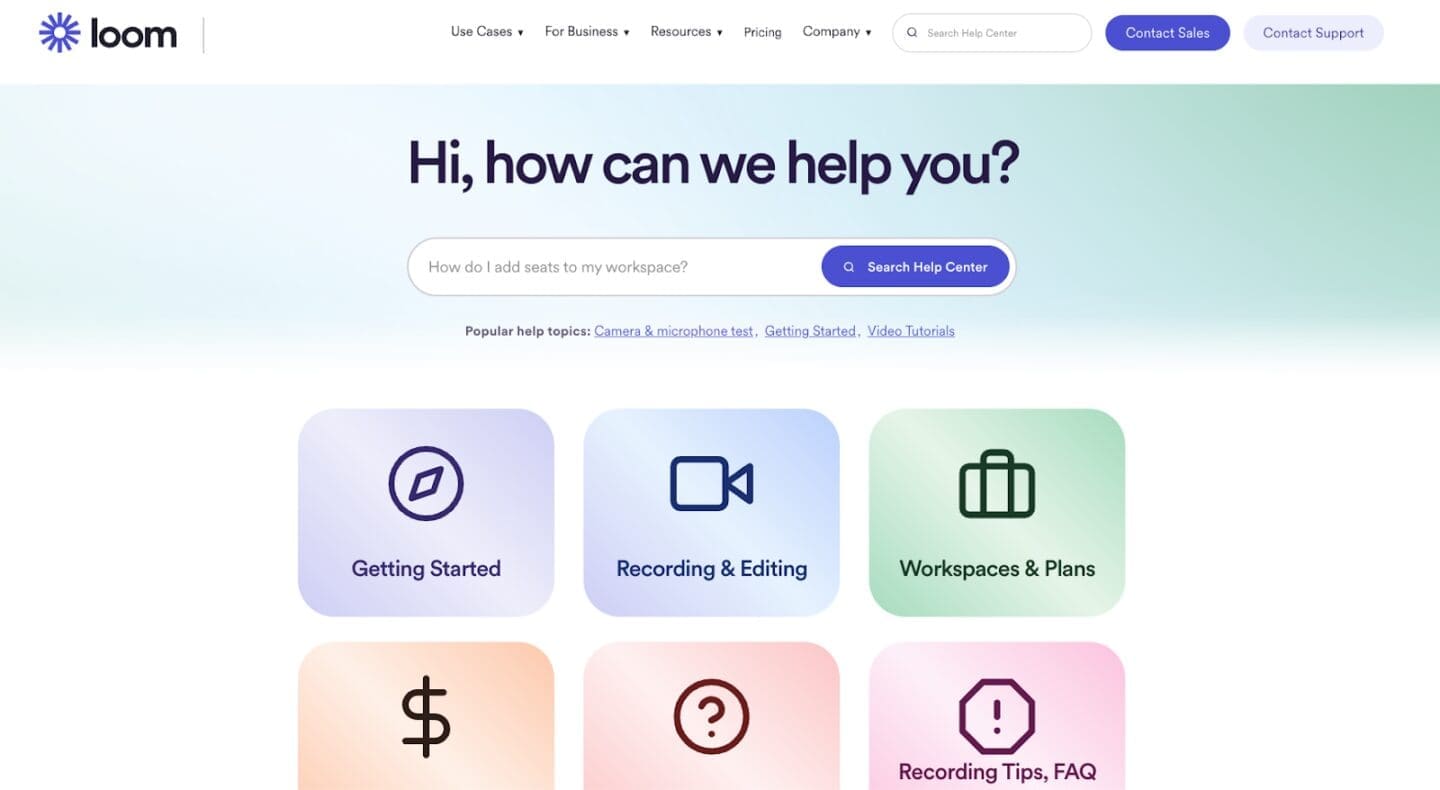
Another great example of a company that gets customer delight right is Loom.
The company has a super in-depth knowledge base and videos that show you everything you need to know about using the platform. They break down their support by getting started, recording and editing tips, use cases, product webinars, and troubleshooting.
Not to mention, they make it easy to get in touch with either their sales or support teams. So, it makes sense that they would have high CSAT scores.
When is a customer satisfaction score useful?
Now that we’re on the same page about what CSATs are, let’s get into when you should use them.
Because they are so easy to deploy and use, CSAT surveys are great for tracking satisfaction at key points throughout the sales cycle. While different companies and teams need to consider what makes sense for them based on their product or service, there are a few critical moments where they’ll definitely come in handy.
Here are the top four times to send a CSAT survey:
1. Right after onboarding
First impressions matter.
And the onboarding process is the first impression when it comes to being your customer.
So, if your product or service fails to meet customer expectations, you need to know ASAP. By learning how satisfied users are right after they’ve been onboarded, you can fine-tune the process to ensure future customers have happy first memories with your product.
2. In between contract renewals
What’s one of the biggest mistakes your sales team can make?
Bombarding customers on the cusp of renewal with surveys. At this point in the process, it’s usually too late to make any meaningful changes.
Having said that, touching base with your customers in between contract renewals can help you address any shortcomings in time to convince them to stay with you.
3. After one-on-one interactions
Customer support is the bedrock of customer satisfaction. Plain and simple.
You can get a sense of how well you deliver by sending a CSAT survey after every one-on-one interaction with your CS team or technical support request.
On top of this, support interactions usually deal with very specific, real-world user problems. So, it can give you fine-grained insight into how you help customers solve specific pain points.
4. After launching new features
Post-feature launch is prime time when it comes to sending a CSAT survey.
Why? Because it can help you learn whether new features are helpful and wanted. If not, they might just be adding complexity without any real value. Either way, this information will help you and your team going forward.
How to calculate CSAT
We know there might be some math-induced heart palpitations coming on. But there’s no need to worry!
The formula for calculating CSAT actually isn’t too bad.
All you need to do is divide the number of positive responses by the total number of responses. Then, multiply the result by 100 to get the percentage score.
(Positive Responses) / (Total Responses) X 100
For CSAT, the most important thing is whether the score is mostly positive or mostly negative. It matters less what the degree of satisfaction or dissatisfaction is.
Just remember, your calculation will vary depending on which scale you use. Additionally, neutral scores don’t count.
So, if you use a 3-point scale, we only count those that respond with a rating of 3. On a 5-point scale, we only count responses with a 4 or 5 rating.
Let’s take a look at an example. Say you send out 80 CSAT surveys and get 50 responses. Of those 50 responses, 38 were positive. Then, the calculation will look like this:
44 / 50 X 100 = 88
This means 88% of customers were satisfied. So, the CSAT is 88. Not too shabby, if we don’t say so ourselves.
Examples of CSAT surveys
While the basic concept is the same, CSAT surveys can come in many different shapes.
Here is an example of an Apple product delivery survey:
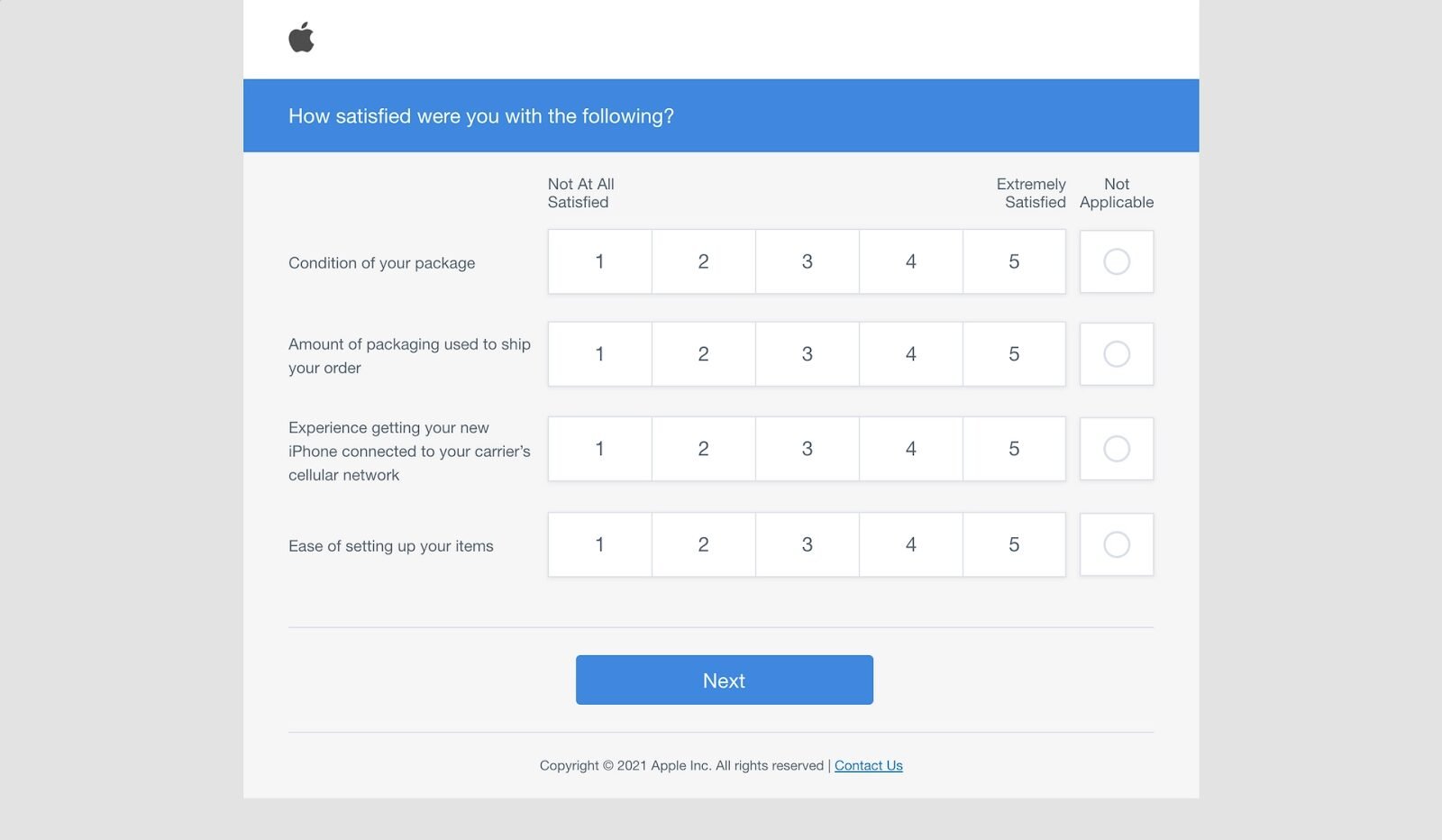
They ask about the condition of the package, amount of packaging, experience getting the iPhone connected to the network, and the ease of setting up the items.
And, here’s an example of a CSAT survey from Skype:
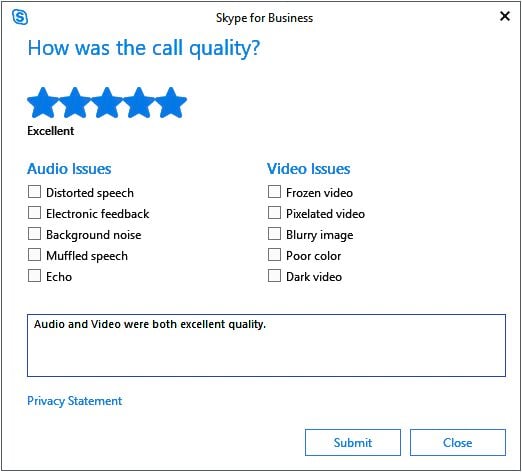
They ask about the call quality and if there were any audio or video issues.
What is a good customer satisfaction score (CSAT) for SaaS?
From industry to industry and brand to brand, there isn’t a one-score-fits-all answer to this question.
Generally though, you’ll want to aim for a score of between 75% and 85%. For comparison, according to the American Customer Satisfaction Index, the overall U.S. customer satisfaction index is 73.2%.
Scores for different industries range from the low 60s to the high 80s. However, the overall satisfaction rating for the computer software industry currently lands at 78%.
That means most SaaS brands need to score in the high-70s to be at least competitive with their peers.
Pros and cons of customer satisfaction score (CSAT) surveys
Just like anything in life, there are pluses and minuses to using CSAT surveys.
To help you weigh each side of the coin, here are the pros and cons:
Pros
- Quick to implement: CSAT surveys are quick to set up, distribute, and determine the results.
- Simple to use: This type of survey is simple and intuitive to use.
- High response rates: CSAT surveys generally get a higher number of responses because there are fewer questions.
Cons
- Potentially inaccurate: Because customers that are “neutral” or dissatisfied are less likely to complete surveys, there’s a chance that your results could be skewed.
- Doesn’t provide long-term insight: CSATs only reflect the short-term sentiment of a particular moment/interaction.
- Subjective nature: “Satisfaction” can mean different things to different people.
Based on all of the pros and cons, you’ll need to decide if this metric is right for your team and your company to use.
What is the difference between NPS, CES, and CSAT?
CSAT is by no means the only snappy acronym for measuring customer satisfaction.
There’s also NPS (Net Promoter Score) and CES (Customer Effort Score), which can give you similar information but from a different angle. When you use these two metrics together, they can offer meaningful insights into your company’s performance.
Here’s a quick breakdown of what each metric is all about:
NPS:
There’s a good chance you’ve seen an NPS survey before. They are similar to CSAT surveys but ask the question: “How likely are you to recommend this product/service to a friend/colleague/etc.?”
Essentially, NPS gives you an overview of how customers feel about your company. It will also help you understand if there are any larger issues you need to watch out for.
CES:
A typical CES survey will ask something like, “How easy was it to use this feature/solve this problem?” This question is especially important to ask after a support interaction or when releasing a new feature.
CES gives you a sense of how pain-free (or painful) it is for customers to interact with you. If your score gets low, it’s a sign that your customer experience is dipping.
5 tips to optimize your SaaS customer satisfaction score (CSAT)
At the end of the day, the goal of the customer satisfaction score is to improve your product as well as the customer experience.
Sure, that makes sense.
But how can you actually go about boosting your SaaS customer satisfaction scores? We’re glad you asked!
Here are a few tips to help you optimize your SaaS CSAT:
1. Get good quality responses
It’s not enough to get a lot of responses, but you also need to ensure they are as accurate as possible. This largely comes down to two factors:
- Send surveys at the right time: We covered some crucial times to send surveys above. But it’s also a good idea to avoid sending surveys early in the morning, over the weekend, or late at night because these times are outside of normal working hours.
- Put surveys in the right place: Surveys need to be as convenient and fast to respond to as possible. For example, an on-screen popup at the end of a live chat session is an effective place to have a survey.
On top of this, you can get clearer takeaways from your surveys by ending them with open-ended questions. Asking something like “What else would you like us to know about your experience?” will help you understand why you get certain responses.
2. Track multiple metrics
While the simplicity of CSAT is its greatest strength, it’s also its greatest weakness.
Tracking multiple customer satisfaction metrics together, like NPS and CES, can give you a much clearer picture of what’s actually going on.
You can also combine this data with other data sets. For example, did you recently launch a new feature/software version? Have you been struggling with uptime/performance? What kind of ticket volume has your support team been dealing with?
3. Visualize and analyze the data
What good is data if you don’t have a way to make sense of it all?
Popular survey tools put a lot of effort into providing helpful visual tools for breaking down quantitative and qualitative data. This is extremely helpful for getting a quick but accurate snapshot into your survey results.
Because before you can take action, you need to understand the data. And part of this process is looking for patterns. Are there commonalities between users who gave negative/positive responses?
You can also look at your open-ended questions for more clues about what made them give that response.
4. Close the loop on customer feedback
This means actually acting on customer feedback and implementing changes. Because unless you solve your customers’ pain points, you won’t see your CSAT go up.
It also shows your loyal customers that you keep listening to and addressing their concerns.
5. Rinse and repeat
If this next step made you say ‘WTF’ to yourself, we don’t blame you.
But even though this step sounds like it has to do with washing your hair, it’s one of the key things you can do to boost customer satisfaction scores.
Calculating your CSAT is not a one-off process. To get the most out of it, you should measure CSAT at regular intervals to see how the perception of your product is changing, and whether your actions have positive results.
This will ensure you’re constantly improving the customer experience.
Using CSAT and product demos to enhance the customer experience
Can you name a single person that doesn’t want to keep their customers happy?
If you can, well, we’d like to meet this strange human. Because we have some questions we want to ask them.
Anyways, gauging how satisfied customers are with your product and their interactions with your team can give you valuable information about the customer experience. And one way you can do this is by sending a CSAT survey.
But that’s not the only way you can gain insights about customer satisfaction.
If you use a demo experience platform (maybe Walnut comes to mind?), you can actually send prospects onboarding interactive tutorials and track the way they use them. This will help you understand which areas piqued customers’ interest and which still need some work, so you can improve your product and onboarding process.
The bottom line is that using both CSAT and a demo experience platform to monitor customer satisfaction will go a long way in helping you improve your customer onboarding and reduce churn.
What’s holding you back? Book a meeting with us now by clicking that “Get Started” button on the top of the screen.

